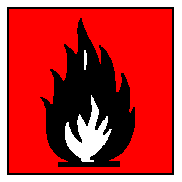International Chemical Safety Cards
| TRIMETHYLAMINE | ICSC: 0206 |
TRIMETHYLAMINE |
 |
 |
| TYPES OF HAZARD/ EXPOSURE |
ACUTE HAZARDS/ SYMPTOMS |
PREVENTION | FIRST AID/ FIRE FIGHTING |
| FIRE | Extremely flammable. Gives off
irritating or toxic fumes (or gases) in a fire. |
NO open flames, NO sparks, and
NO smoking. |
Shut off supply; if not possible
and no risk to surroundings, let the fire burn itself out; in other cases extinguish with
powder, carbon dioxide. |
| EXPLOSION | Gas/air mixtures are explosive. |
Closed system, ventilation,
explosion-proof electrical equipment and lighting. Do NOT use compressed air for filling,
discharging, or handling. Use reduced-sparking handtools. |
In case of fire: keep cylinder
cool by spraying with water. |
| EXPOSURE | |
STRICT HYGIENE! |
|
| INHALATION | Abdominal pain. Burning
sensation. Cough. Diarrhoea. Laboured breathing. Shortness of breath. Sore throat. |
Ventilation, local exhaust, or
breathing protection. |
Fresh air, rest. Half-upright
position. Artificial respiration if indicated. Refer for medical attention. |
| SKIN | Redness. Skin burns. Pain. |
Protective gloves. Protective
clothing. |
Remove contaminated clothes.
Rinse skin with plenty of water or shower. Refer for medical attention. |
| EYES | Redness. Pain. Blurred vision.
Severe deep burns. |
Face shield or eye protection in
combination with breathing protection. |
First rinse with plenty of water
for several minutes (remove contact lenses if easily possible), then take to a doctor. |
| INGESTION | |
|
Rinse mouth. Do NOT induce
vomiting. Give plenty of water to drink. Refer for medical attention. |
| SPILLAGE DISPOSAL | STORAGE | PACKAGING & LABELLING | ||
| Evacuate danger area! Consult an
expert! Ventilation. Do NOT wash away into sewer. Remove with fine water spray (extra
personal protection: complete protective clothing including self-contained breathing
apparatus). |
Fireproof. Separated from
incompatible materials (see Chemical Dangers). Cool. |
F symbol Xi symbol R: 13-36/37 S: 16-26-29 UN Haz Class: 2.1 |
||
| SEE IMPORTANT INFORMATION ON BACK | ||||
|
||||